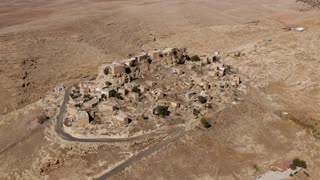Premium Only Content

DNS Explained | Domain Name System | Cisco CCNA 200-301
The Domain Name System (DNS) plays a very important role in modern-day networking. It's an unsung hero that allows us to use the internet in the simplest way possible. Without DNS, our connected lives would look very different.
DNS will take our domain name, and translate, or resolve it, into an IP address.
Let's say you want to go to your favourite website, so you type, www.certbros.com.
Remember, web servers do not work with domain names, so your computer needs to translate this into an IP address.
The first thing it does is check its local cache both on the computer and the browser. There’s also a local configuration file that's checked.
If there are no cache entries, your computer will send a query to something called a DNS recursive resolver asking for the IP address of certbros.com.
Once the DNS resolver receives your query, it checks its cache. If it can’t find an entry for certbros.com, it will send a request to another server, this is called a ROOT server.
The root server will then refer us to the top-level domain server (TLD) for .com. A TLD server is a server that contains information for domains with a specific extension. For example .com .org .net etc
The TLD server will then refer us to the authoritative nameserver.
The authoritative nameservers will have a record for Certbros.com and it will return the IP address to our DNS Resolver which will then send it back to our computer.
Our computer will now be able to contact the webserver using the newly discovered IP address.
-
 LIVE
LIVE
LFA TV
3 hours agoLFA TV ALL DAY STREAM - FRIDAY 9/5/25
4,569 watching -
 1:49:27
1:49:27
Game On!
19 hours ago $3.30 earnedIt's A FOOTBALL Friday! NFL In Brazil! Chiefs vs Chargers Preview!
34.7K1 -
 LIVE
LIVE
JuicyJohns
1 hour ago $0.34 earned🟢#1 REBIRTH PLAYER 10.2+ KD🟢
72 watching -
 14:31
14:31
Adam Does Movies
14 hours ago $3.20 earnedAlien: Earth Episode 5 - Recrap
45.5K2 -
 12:54
12:54
Michael Button
18 hours ago $3.06 earnedWhat If We’re Just the Most Recent Civilization?
20.9K14 -
 1:15:19
1:15:19
Surviving The Survivor: #BestGuests in True Crime
2 days agoDonna Adelson's Defense Witnesses Get Caught Up on Stand; Will Jurors Believe Them?
10.4K -
 LIVE
LIVE
The Bubba Army
23 hours agoTyson vs Mayweather SUPERFIGHT! - Bubba the Love Sponge® Show | 9/05/25
1,528 watching -
 25:26
25:26
World2Briggs
20 hours ago $1.40 earnedTop 15 Most Visited Cities in the World
18.5K1 -
 2:01:58
2:01:58
BEK TV
1 day agoTrent Loos in the Morning - 9/05/2025
17.3K -
 LIVE
LIVE
FyrBorne
3 hours ago🔴Warzone M&K Sniping: This May Be The Most Broken Update Yet
73 watching